Kassala is home to a vast array of birds, from the sand grouse and bustards of the desert to the weavers of the wetlands. It is a paradise for bird lovers, with over 200 species of birds recorded in the region and many more that remain to be discovered.
The diversity of habitats across Kassala provides a home to various species, from large raptors like the Black Kite to smaller songbirds like the Red-billed Firefinch.
Bird watching is popular in Kassala, with many birders visiting the region to marvel at its feathered inhabitants. Whether you’re a beginner or an experienced birder, Kassala is the perfect place to enjoy the beauty of birds in their natural habitat.
14 Birds to Watch in Kassala
Kassala is a city in eastern Sudan, near the border with Eritrea. Stunning landscapes surround it, such as the Taka Mountains and the Gash River. Kassala is also home to a vast array of birds, from the sand grouse and bustards of the desert to the weavers of the wetlands.
Here are 14 birds that you should watch out for when you visit Kassala:
1. Black-winged Stilt
The black-winged stilt is a wading bird from the avocet and stilt family. It is found worldwide, and its scientific name is H. himantopus. This species is highly adapted to aquatic environments, with long legs designed to wade in shallow water.
Its wings are black, giving it its name. The bird is frequently seen in wetlands, feeding on small aquatic animals such as fish, crustaceans, and insects. It is known to build floating nests on the surface of water or the edges of wetlands.
The black-winged stilt is a unique bird with a remarkable ability to adapt to many different environments, allowing it to survive in various climates and habitats.
| Kingdom | Animalia |
| Phylum | Chordata |
| Class | Aves |
| Order | Charadriiformes |
| Family | Recurvirostridae |
| Genus | Himantopus |
| Species | H. himantopus |
2. Great Cormorant
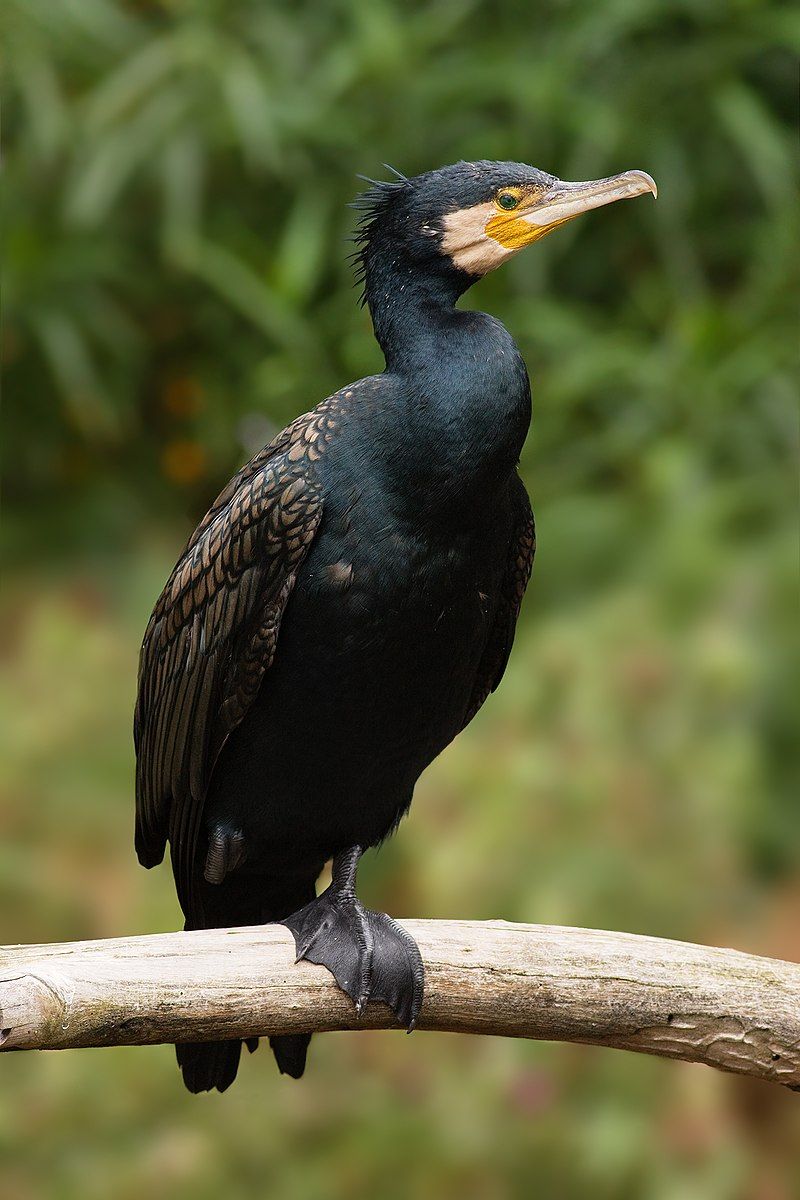
The great cormorant is a seabird species found across the Northern Hemisphere, Australia, India, and New Zealand. In New Zealand, it is known as the black shag or kawau, while in the Northern Hemisphere, it is known as the great black cormorant.
In Australia, it is called the black cormorant; in India, it is called the large cormorant.
This species of cormorant is widely distributed and can be found in many different habitats, such as coasts, estuaries, and inlets. The great cormorant is a large and powerful bird with a length of up to three feet and a wingspan of up to five feet.
It is black or dark brown, with a slightly paler chest and neck. It has a long neck, a stout body, and a long tail.
Its diet consists mainly of fish, which it catches by diving from the water’s surface and swimming underwater. The great cormorant is an essential seabird species, as it plays a vital role in the natural balance of marine ecosystems.
It helps to keep fish stocks in check, as well as helping to maintain the health of seabed habitats.
It also plays a vital role in controlling the populations of certain species of fish, such as cod and haddock. The great cormorant is a conservation concern, as it is threatened by human activities such as overfishing, habitat destruction, and pollution.
It is also vulnerable to predation from other birds, and its population is declining in some areas. Therefore, we must protect this species, as it is an integral part of our natural heritage.
| Kingdom | Animalia |
| Phylum | Chordata |
| Class | Aves |
| Order | Suliformes |
| Family | Phalacrocoracidae |
| Genus | Phalacrocorax |
| Species | P. carbo |
3. Black Stork
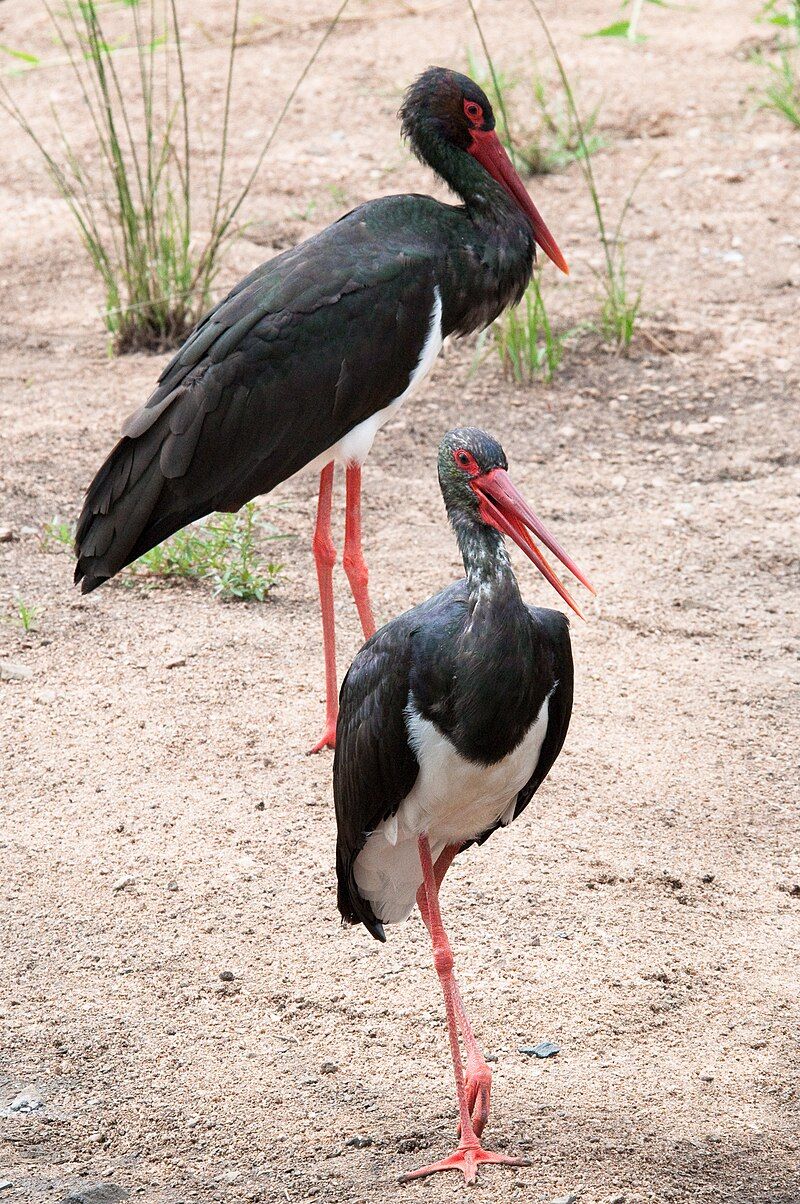
The black stork is a species of stork that belongs to the family Ciconiidae. It was first scientifically described by Swedish naturalist Carl Linnaeus in the 10th edition of his publication Systema Naturae.
The black stork is a large bird, typically reaching lengths of 75-90 cm and wingspans up to 170 cm. They have distinctive glossy black plumage with a white belly, white undertail coverts, and red legs and beaks. Black storks are found in parts of Europe, Africa, and Asia.
They prefer wetlands and woodlands near rivers and streams, as they feed primarily on fish and amphibians. Breeding pairs nest in trees or on cliff ledges and typically lay two to four eggs.
| Kingdom | Animalia |
| Phylum | Chordata |
| Class | Aves |
| Order | Ciconiiformes |
| Family | Ciconiidae |
| Genus | Ciconia |
| Species | C. nigra |
4. Marabou Stork
The marabou stork is an impressive bird native to the sub-Saharan region of Africa. It belongs to the Ciconiidae family of storks and is well-known for its size. It can grow up to five feet tall, and its wingspan can reach up to eleven feet.
It is a highly adaptable bird, thriving in wet and arid habitats. It is also quite comfortable around humans, often seen around human habitation, particularly in landfill sites.
The marabou stork feeds primarily on carrion, making such sites an excellent food source. Despite its large size and formidable presence, the marabou stork is not known to be aggressive or territorial.
It is often seen peacefully coexisting with other species of birds and humans.
| Kingdom | Animalia |
| Phylum | Chordata |
| Class | Aves |
| Order | Ciconiiformes |
| Family | Ciconiidae |
| Genus | Leptoptilos |
| Species | L. crumenifer |
5. Little Swift
The little swift is a diminutive species of swift found in Africa and southwestern Asia. They are also known to migrate to and breed in southern Europe. Little swifts inhabit urban and rural areas, favoring rocky cliffs to build their nests.
This behavior is typical of all members of the order Apodiformes, a group of aerial birds that includes hummingbirds and swifts. Little swifts build their nests using just the saliva from their beaks and small pieces of leaves, grass, or feathers.
These nests are small and cup-shaped and usually found in crevices on cliff faces, caves, or under overhanging rocks. They may also be found on buildings, bridges, or other artificial structures in urban areas.
Little swifts are highly social birds and have often been observed in flocks of dozens or even hundreds of individuals. They are known for their acrobatic flight patterns and aerial agility and can usually be seen gliding and swooping for long distances.
The little swift is an exciting and impressive species and is an excellent example of the diversity and adaptability of the avian world.
| Kingdom | Animalia |
| Phylum | Chordata |
| Class | Aves |
| Clade | Strisores |
| Order | Apodiformes |
| Family | Apodidae |
| Genus | Apus |
| Species | A. affinis |
6. Ferruginous Duck
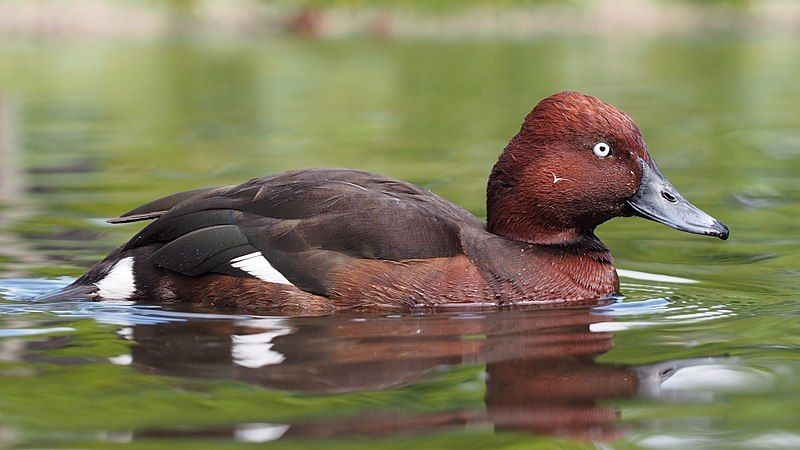
The ferruginous duck is a species of diving duck from Europe and Siberia. It has many names, including ferruginous pochard, common white-eye, and white-eyed pochard.
These medium-sized birds have large wingspanes and strong feet, which help them dive for food in lakes and rivers.
The scientific name for the species is derived from ancient Greek, specifically the references to Lithuania, an unidentified seabird mentioned by authors such as Hesychius and Aristotle, and York, the Russian name for a duck.
The ferruginous duck is a species of waterfowl found in various habitats, from wetlands to lowland areas. They feed mainly on aquatic vegetation but eat insects, fish, and other small marine animals.
The population of this species is declining due to habitat destruction and other human activities and is currently listed as vulnerable on the IUCN Red List.
| Kingdom | Animalia |
| Phylum | Chordata |
| Class | Aves |
| Order | Anseriformes |
| Family | Anatidae |
| Genus | Aythya |
| Species | A. nyroca |
7. European Turtle Dove
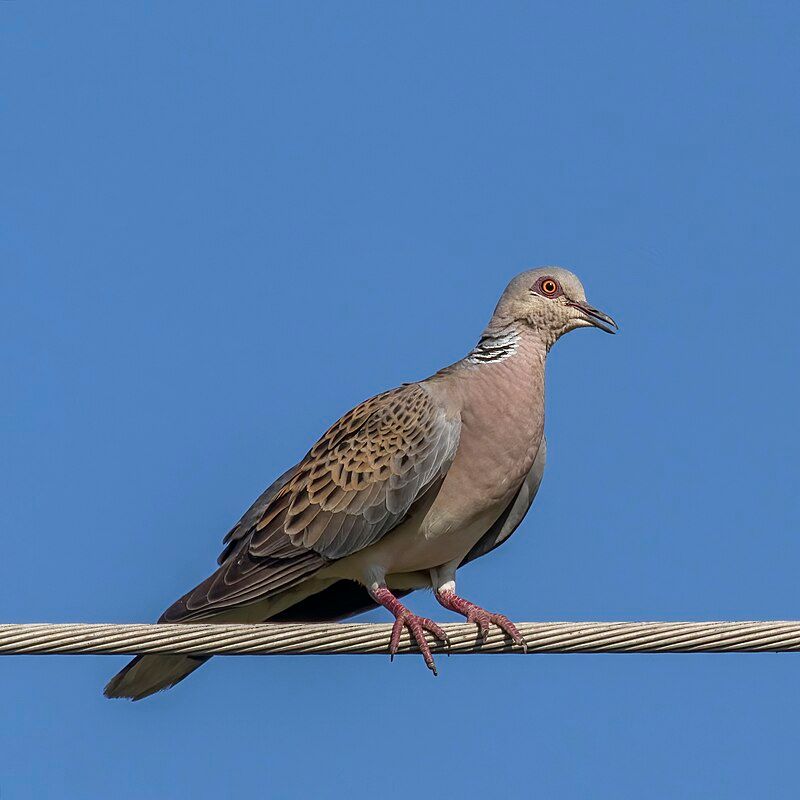
The European turtle dove is a species of bird that belongs to the Columbidae family, composed of doves and pigeons.
It is widely distributed across the southwestern Palearctic region, including North Africa, and is known to migrate to northern sub-Saharan Africa during winter.
The European turtle dove is an important species for many local populations as it is a vital source of food, nutrition, and other resources. During the breeding season, it forms large flocks and is often seen in open woodlands and other grassy areas.
Its diet mainly consists of grains, seeds, fruits, and insects. The European turtle dove is a beautiful species with its grey and brown plumage and distinct white and black spotted patterns on its wings. Its call is a soft cooing sound often heard during the day.
This species is currently listed as Near Threatened by the IUCN Red List of Threatened Species due to its declining population resulting from habitat loss, hunting, and other human-caused disturbances.
| Kingdom | Animalia |
| Phylum | Chordata |
| Class | Aves |
| Order | Columbiformes |
| Family | Columbidae |
| Genus | Streptopelia |
| Species | S. turtur |
8. Glossy Ibis
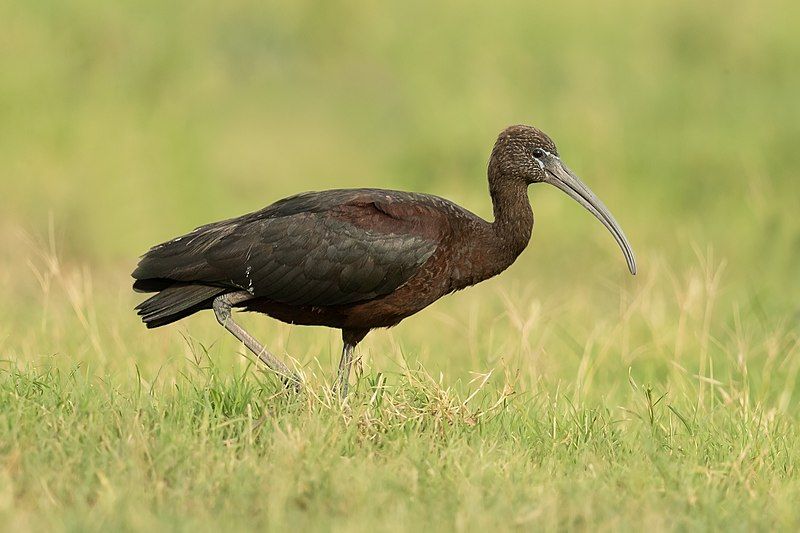
The glossy ibis is a water bird belonging to Pelecaniformes and the ibis and spoonbill family Threskiornithidae. It is a large, long-legged, wading bird that is found in wetlands throughout the world.
Its scientific name, Plegadis falcinellus, comes from Ancient Greek and Latin words that mean “sickle.” This is due to the distinctive shape of its bill, curved like a sickle blade.
The glossy ibis is most commonly seen in wetlands, marshes, and shallow lagoons, where it hunts by wading through shallow water and sweeping its bill from side to side to catch small insects, crustaceans, and other animals. It is also known to feed on carrion and berries.
The glossy ibis is usually black or dark brown, with a metallic green or copper sheen on its feathers. Its long legs are typically red or orange.
The glossy ibis is an essential species in its wetland habitats, serving as a natural predator of aquatic insects, crustaceans, and other small animals.
| Kingdom | Animalia |
| Phylum | Chordata |
| Class | Aves |
| Order | Pelecaniformes |
| Family | Threskiornithidae |
| Genus | Plegadis |
| Species | P. falcinellus |
9. Greater Flamingo
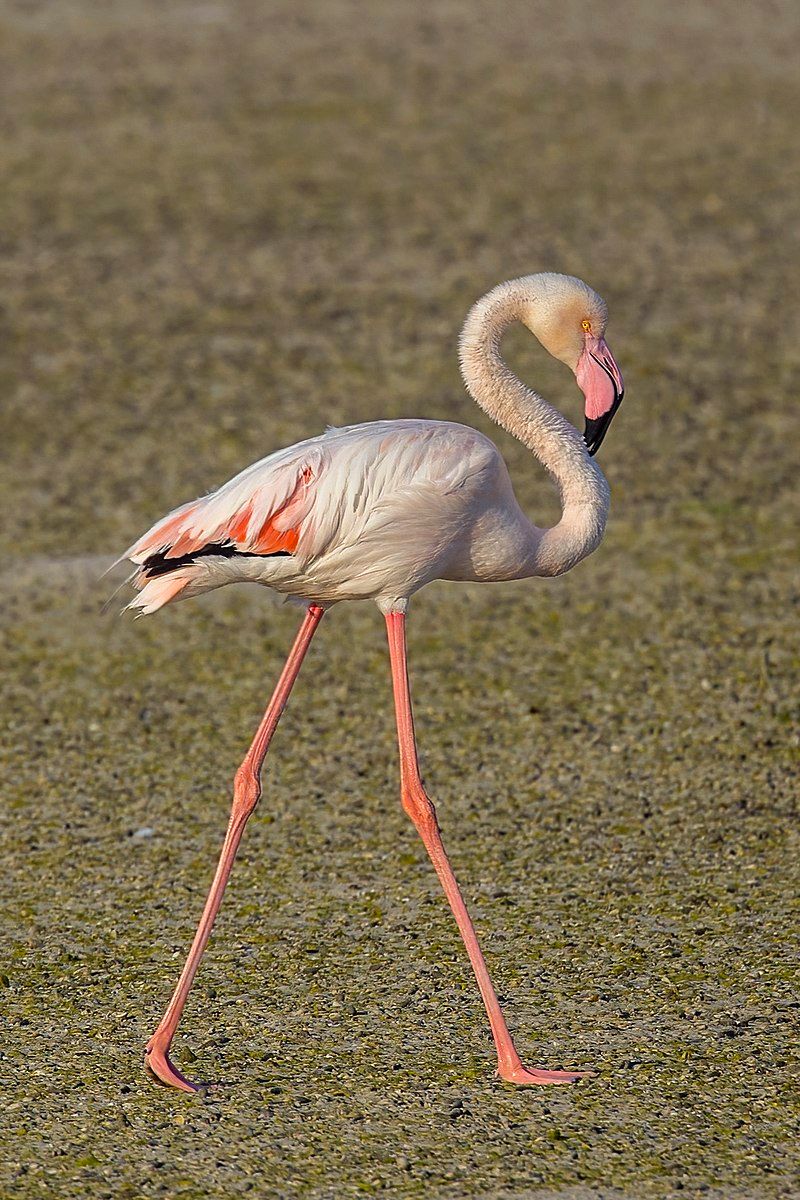
The greater flamingo is the most well-known and most prominent species of all flamingos. It is found in many places worldwide, particularly in the Old World.
Its range extends from Northern and Sub-Saharan Africa, the Indian Subcontinent, the Middle East, the Levant, the Persian Gulf, the Gulf of Aden, the Red Sea, and the Mediterranean countries of Southern Europe.
This extensive range of countries is likely because flamingos are highly adaptable birds that survive in many different climates and habitats. The greater flamingo is a highly social bird, often gathering in large flocks at shallow lakes, lagoons, and mudflats.
They feed mainly on brine shrimp but have consumed mollusks, fish, insects, and other small aquatic creatures. Flamingos are easily recognizable by their long legs and their pinkish-red plumage.
Their large beaks are specially adapted for filtering out food from the water. They can also turn their heads upside down underwater to find food. The greater flamingo is an essential species in many parts of the world.
They are an iconic symbol of the tropics and nature’s beauty. Their presence has also been known to boost tourism in certain areas. Furthermore, they provide an essential source of food for many local communities.
| Kingdom | Animalia |
| Phylum | Chordata |
| Class | Aves |
| Order | Phoenicopteriformes |
| Family | Phoenicopteridae |
| Genus | Phoenicopterus |
| Species | P. roseus |
10. Garganey
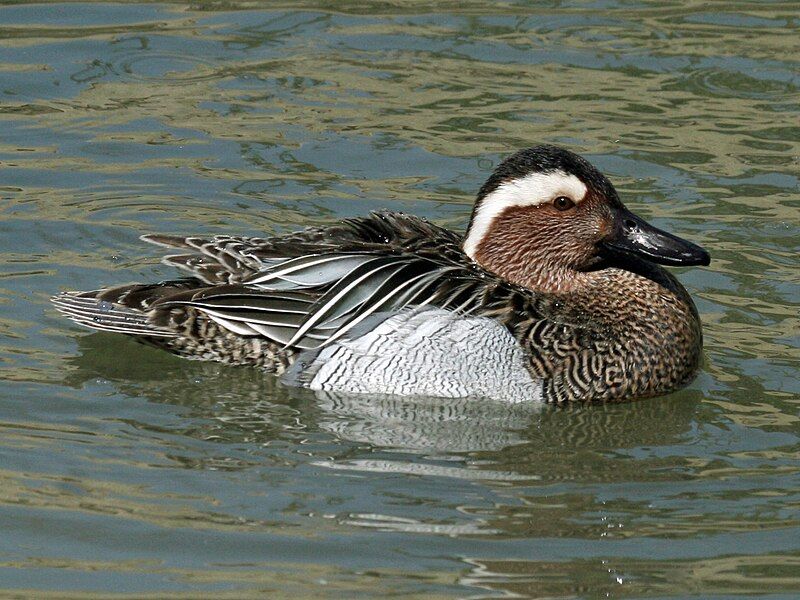
The garganey is a species of small dabbling duck found across much of Europe and the Palearctic. This species is highly migratory, meaning that the entire population of garganeys makes a long-distance migration yearly.
During the winter of the Northern Hemisphere, the garganeys will move to warmer climates in Africa, India, Bangladesh, and Australasia. Here, they will form large flocks.
This migration helps the species to survive the cold winter months in the Northern Hemisphere and to remain safe from predators. The garganeys will return to their breeding grounds in Europe and the Palearctic during spring.
This annual migration is an impressive feat of nature and allows the species to remain balanced worldwide.
| Kingdom | Animalia |
| Phylum | Chordata |
| Class | Aves |
| Order | Anseriformes |
| Family | Anatidae |
| Genus | Spatula |
| Species | S. querquedula |
11. Laughing Dove
The Laughing Dove is a small species of pigeon that is native to several areas around the world. In Africa, the Middle East, South Asia, and Western Australia, the Laughing Dove is a resident breeder, meaning it breeds in these areas year-round.
This dove species has even established itself in the wild of Western Australia after being released from Perth Zoo in 1898.
This indicates that the Laughing Dove can adapt to different climates and environments and coexist with humans in the wild. The Laughing Dove is a famous bird to observe due to its beautiful plumage and characteristic call, which resembles laughter.
The dove’s plumage varies in color depending on its location, but it generally has a grayish-brownish body with a pinkish-brown chest, neck, and belly.
The Laughing Dove is a small but mighty species, and its presence in many parts of the world reminds us of the bird’s adaptability and resilience.
| Kingdom | Animalia |
| Phylum | Chordata |
| Class | Aves |
| Order | Columbiformes |
| Family | Columbidae |
| Genus | Spilopelia |
| Species | S. senegalensis |
12. Great White Pelican
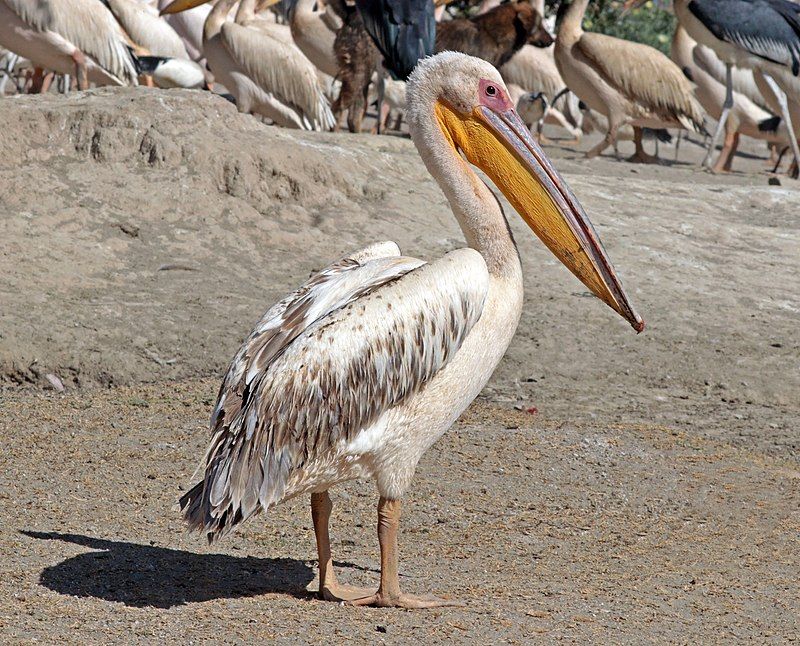
The great white pelican is a bird found in the pelican family, and various names, such as the eastern white pelican, rosy pelican, or white pelican, also know it.
This bird is found across many areas, from southeastern Europe to Asia and Africa. It is a bird that prefers to nest in swamps or shallow lakes.
These birds are unique in appearance, with a hefty bill and white plumage that has a hint of pink during the breeding season. The wings are also black with a white stripe running along them. The bill is yellow with a black tip, and the legs are yellowish.
The great white pelican is a large bird with a wingspan of up to 2.5 meters and a weight of around 8-9 kg. The great white pelican is a social bird that lives and breeds in colonies. It feeds by swimming in shallow waters where it can catch small fish to eat.
It is a unique bird in that it can catch fish by dipping its bill into the water and then rapidly draining the water out of its bill. The diet of the great white pelican consists mainly of fish, but it also consumes insects, crustaceans, and frogs.
The great white pelican is a majestic bird that is a delight to observe in its natural habitat. It is a species under threat due to increasing pollution, destruction of wetlands, and overfishing.
Conservation efforts are ongoing to protect these birds and ensure they can remain a part of our natural world for many generations.
| Kingdom | Animalia |
| Phylum | Chordata |
| Class | Aves |
| Order | Pelecaniformes |
| Family | Pelecanidae |
| Genus | Pelecanus |
| Species | P. onocrotalus |
13. Stork
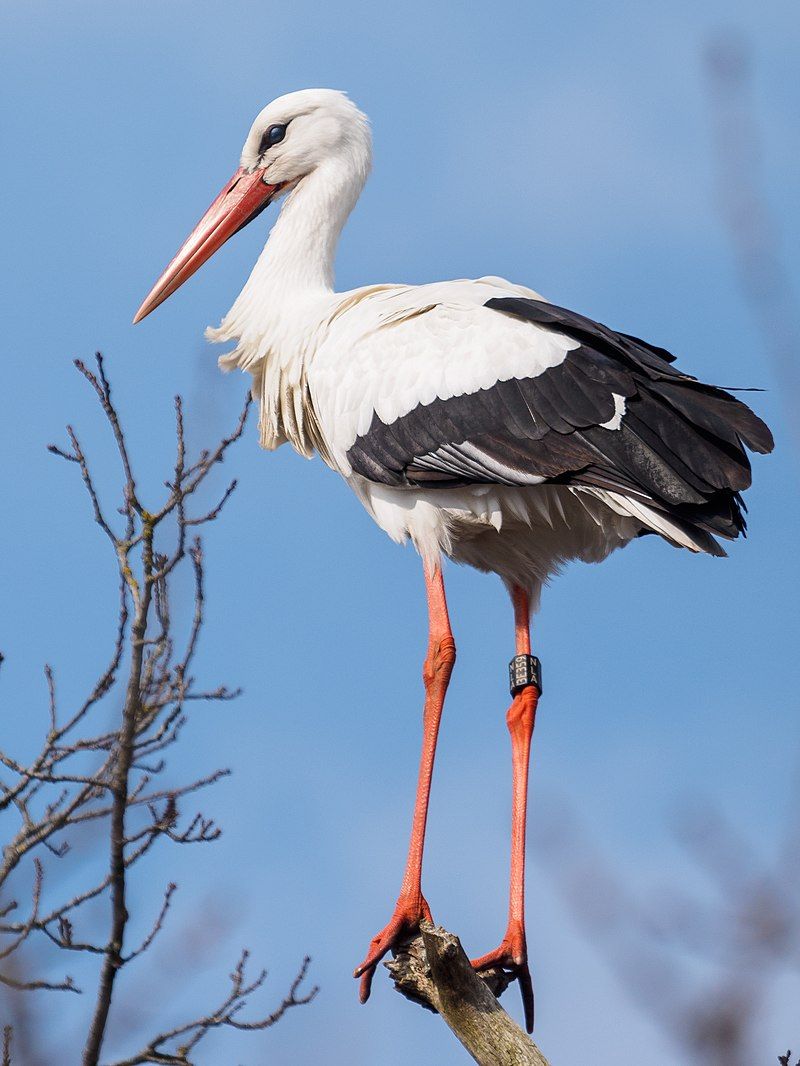
Storks are a species of large wading bird easily recognizable by their long legs, necks, and stout bills. They are part of Ciconiidae, a group of wading birds that make up the order Ciconiiformes.
This order used to include a variety of other bird families, such as herons and ibises; however, these have since been moved to different orders. Storks are found worldwide and can be seen near wetlands, rivers, and lakes.
They have potent wings and are strong fliers, with some species migrating long distances. Their diet includes fish, small mammals, insects, and prey. Storks also nest in large colonies, often on cliff ledges and in trees.
| Kingdom | Animalia |
| Phylum | Chordata |
| Class | Aves |
| Clade | Aequornithes |
| Order | Ciconiiformes |
| Family | Ciconiidae |
14. Purple Heron
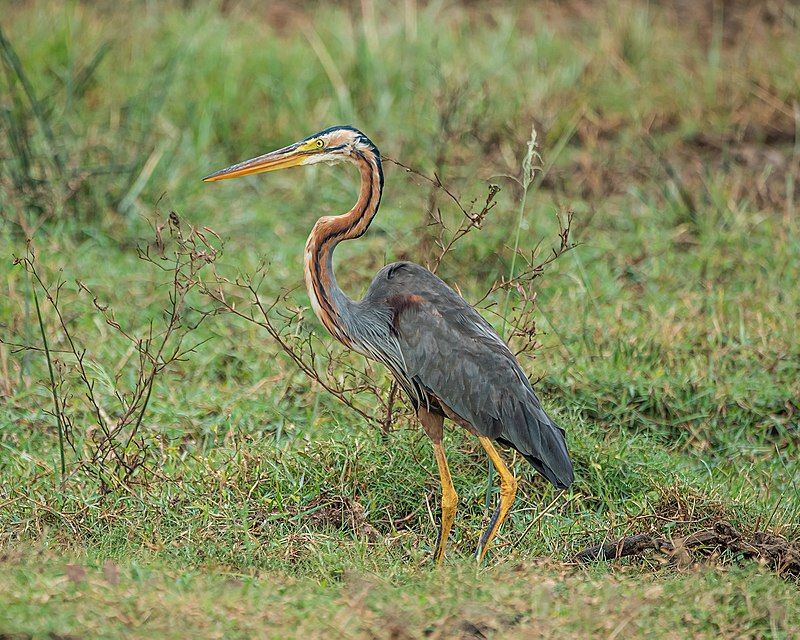
The purple heron is a species of heron found in many parts of the world. It is widely distributed, breeding in Africa, central and southern Europe, and in the south and eastern parts of the Palearctic – an area stretching from the Himalayas to western Siberia.
This species is known for its striking color, with deep purple feathers and a long neck allowing it to reach the depths of rivers and lakes.
The purple heron is a solitary bird, often found in wetlands and near lakes, where it can see fish and other small creatures to feed on. It is an opportunistic hunter, relying on stealth and surprise to catch its prey.
It is also quite adaptable, able to adjust to different climates and habitats.
The purple heron is not considered a threatened species despite its wide range. However, its population is declining in some areas due to human activities such as hunting and the destruction of wetlands.
| Kingdom | Animalia |
| Phylum | Chordata |
| Class | Aves |
| Order | Pelecaniformes |
| Family | Ardeidae |
| Genus | Ardea |
| Species | A. purpurea |
Conclusion
Birds play an essential role in the Kassala region, providing a great source of food, shelter, and entertainment. Their presence is an integral part of the local environment and culture, and they are a great addition to the area’s beautiful landscape.
They also provide a valuable source of information about local ecosystems’ health. Therefore, protecting and conserving the birds of Kassala is essential to ensure their continued presence and contribution to the region.